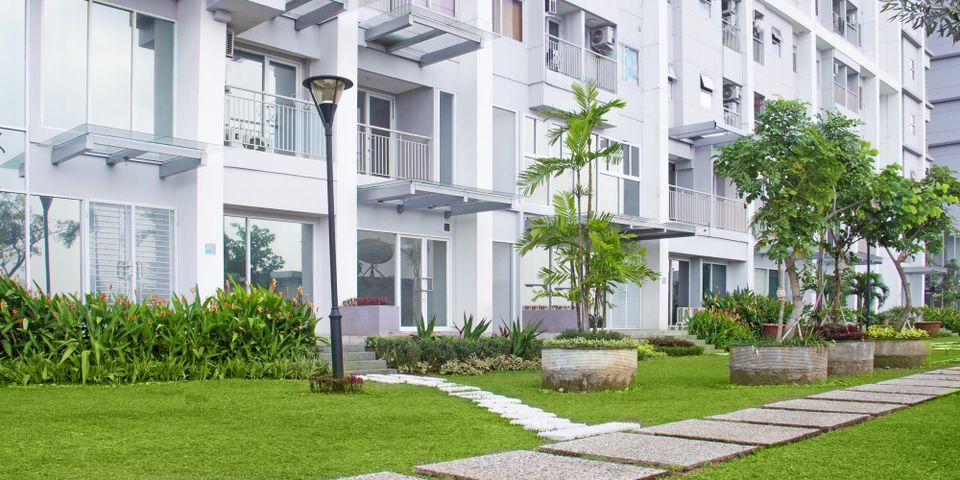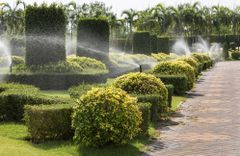
Yellow sod can look unappealing to visitors, diminishing your business’s curb appeal. Fortunately, you can take steps to combat the problem and prevent it from happening later. Here’s a helpful guide to make your grass lush and green again.
Why Does Grass Turn Yellow?
Dehydrated grass will dry out and turn yellow. An excess of nitrogen is another common cause of yellowing. Over-fertilizing delivers a surplus of nitrogen that can alter the pH of your soil and burn the roots of your grass. A low level of nitrogen can also cause issues since grass needs the nutrient to turn green. Additionally, cutting your lawn extremely short may burn it, causing it to die.
How Can You Fix Yellow Grass?
 Deep-watering less frequently is more effective than shorter sessions every day. The grass roots will grow deeper and absorb more water and nutrients from the soil as a result.
Deep-watering less frequently is more effective than shorter sessions every day. The grass roots will grow deeper and absorb more water and nutrients from the soil as a result.
Additionally, use a slow-release fertilizer to provide the nourishment the lawn needs. Rather than too much or too little nitrogen, your grass will receive just the right amount steadily over time. Supplements may also work for grass that needs more nitrogen.
If your soil pH is to blame, adding compost can help fix the level or drainage problems.
To prevent yellowing sod in the future, change your mowing habits. Raise your blades, and never mow when the grass is wet. Also, if you have a large number of trees, trim the area around the yellow patches so sunlight can reach the grass. Raking and aerating your lawn will help circulate air, water, and fertilizer as well.
If you’re looking to improve the quality of your business’s lawn, turn to Alii Turf in Wahiawa, HI. Serving all of the Hawaiian Islands, the locally owned and operated farm provides sod and turf to residential and commercial clients. To find out which of their grass varieties is best for your lawn and request a quote, call (808) 293-8873.
About the Business
Have a question? Ask the experts!
Send your question

